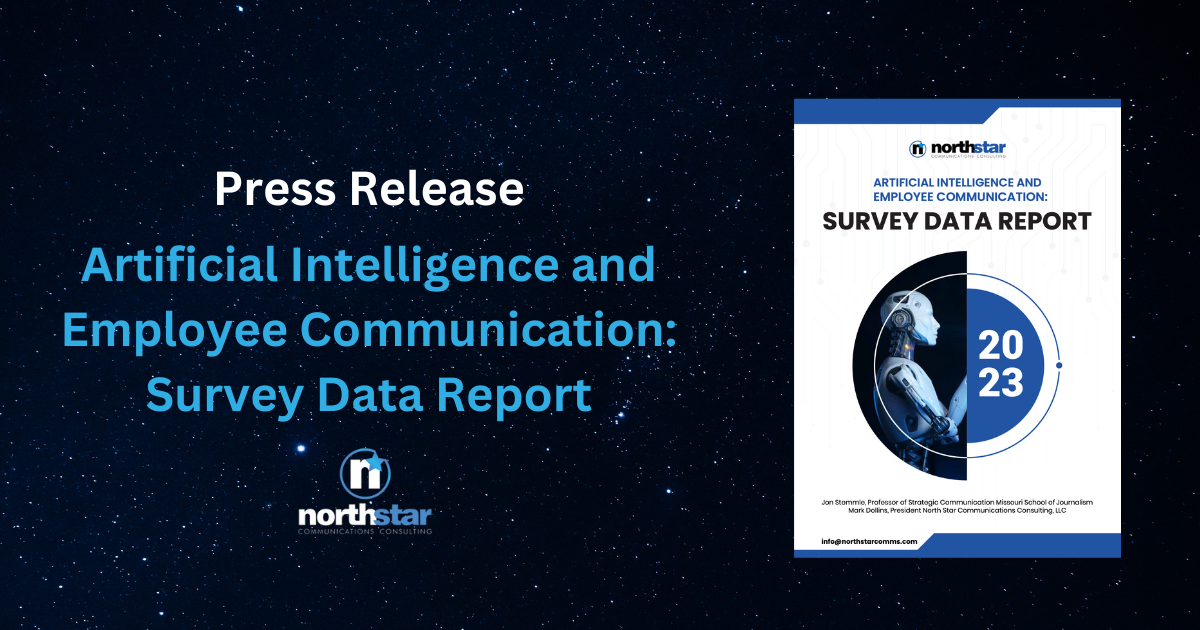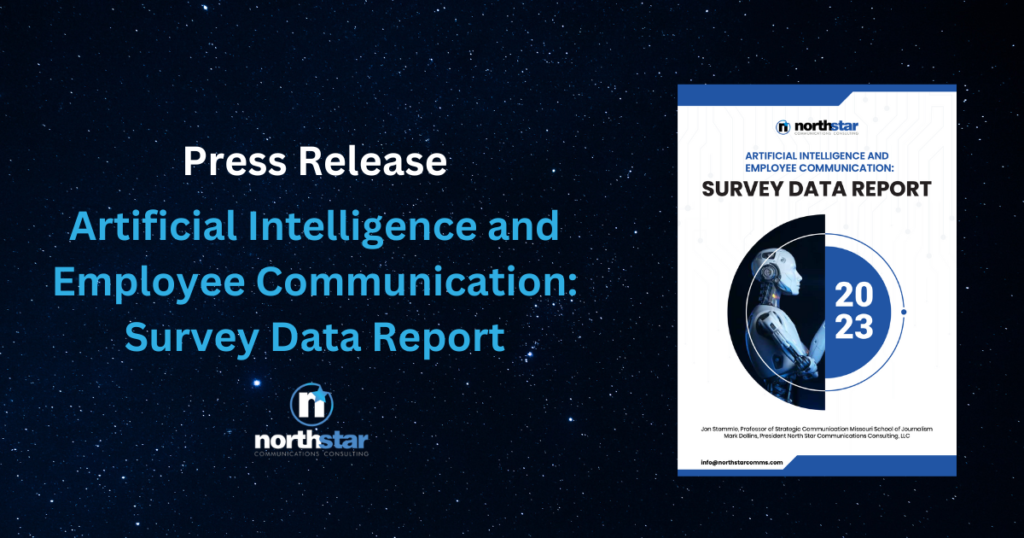
Download your free copy of the report here: https://bit.ly/NorthStarCommsAI.
NEWS
Contact: North Star Communications Consulting (917-624-9401)
New AI survey results from employee communicators says they see potential, but are hesitant
- Despite recognizing potential value of AI, employee communicators hesitant to fully embrace technology
- Barriers to AI adoption include accuracy, security, job loss fears and affordability of the technology
NEW YORK, NY (Sept. 6, 2023) New data from a national survey of professional employee communicators shed light on a paradoxical situation where these communicators recognized the benefits of artificial intelligence (AI), but are hesitant to fully adopt it due to concerns about accuracy, security and job impact. Despite this hesitation, they believe AI can deliver value relatively quickly, primarily in terms of saved time and content generation. As AI technology continues to evolve and address these concerns, it is likely that more employee communicators will more thoroughly embrace its use in their work processes.

A report on the survey – conducted by North Star Communications Consulting and University of Missouri School of Journalism professor of Strategic Communication Jon Stemmle details a range of data, from feelings about AI, to its perceived potential, current use, its value and barriers to adopting it, this research is one of the first to assess an industry’s position on adapting to the latest seismic shift in technology for communicators.
“We’re clearly at a nascent stage for employee communicators fully using AI,” said North Star Communications President Mark Dollins. “But as an industry, we’re aware of what’s here and what’s coming and beginning to experiment with capabilities at the tip of the iceberg.”
“This research gives us a solid view of where the early pain points are and what adoption of these technologies might look like in the coming years,” Stemmle added. “Whether that’s in partnership with other functions in our organizations, or with clients, there’s no question that communicators stand at a crossroad: either wait to be told how to use AI technologies, or influence how they’re used proactively.”
Other key survey findings include:
- While many respondents feel confident about their knowledge of AI, they also express skepticism and concern about its accuracy and security. Respondents acknowledge the potential benefits of AI in saving time on mundane tasks and improving efficiency — allowing them to focus more on strategic work.
- A significant portion of respondents report seeing AI applications in business processes and employee communications, and a majority believe that using AI for work assignments is ethical. Content generation emerged as a primary area where AI could be useful, along with assisting in ideation and drafting materials like executive summaries and discussion guides.
- Despite recognizing the potential value of AI, employee communicators appear hesitant to fully embrace the technology. Many of them disagree with the idea that AI is the future of employee communications and express concerns about job elimination stemming from AI adoption. Nevertheless, a substantial proportion believe that AI can deliver value for employee communications within the first year of implementation.
- Primary barriers to AI adoption include concerns about accuracy and security, along with the affordability of the technology. Additionally, explaining the value of AI to leadership and learning how to use AI are perceived as potential challenges.
- When asked about their feelings toward using AI for employee communications, interest, anxiety and excitement were the most common responses. While interest indicates curiosity and potential openness to AI adoption, anxiety reflects concerns and uncertainties about its impact.
- In terms of current AI usage, the majority of respondents report they expect to be using AI for employee communications within the next year. ChatGPT has emerged as the dominant AI tool used by employee communicators.
To view an executive summary or download a full report of the survey results, visit www.northstarcomms.com. The survey results follow North Star’s full research paper on the AI landscape for communications, also available for download on the website.
About Jon Stemmle
Jon Stemmle is a professor and the faculty chair of strategic communication at the Missouri School of Journalism. In his role as a professor, Stemmle has taught a wide range of classes dealing with topics such as public relations, health and science communication, social media, event planning and integrated marketing campaigns. Since 2003, Stemmle has been part of grant projects totaling more than $30 million dealing with topics such as health and science literacy, cancer prevention communications and crisis management. In 2022, his co-authored book with Mark Dollins on employee communication was published by Routledge entitled “Engaging Employees through Strategic Communication: Skills, Strategies, and Tactics.”
About North Star Communications Consulting
North Star is a New York City-area based consultancy with deep expertise in employee engagement and change communication, and in communications talent development. The globally-award-winning agency has a proven track record of delivering measurable results through some of the largest M&A transactions in history. Its clients include Fortune 500 companies, regional businesses and national organizations in markets and industries across the globe. For more information, visit www.northstarcomms.com.
Download your free copy of the report here: https://bit.ly/NorthStarCommsAI



